
Thoroughbred racing is a sport and industry involving the racing of Thoroughbred horses. It is governed by different national bodies. There are two forms of the sport – flat racing and jump racing, the latter known as National Hunt racing in the UK and steeplechasing in the US. Jump racing can be further divided into hurdling and steeplechasing.
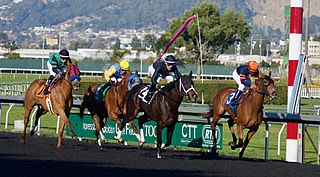
Horse racing is an equestrian performance sport, typically involving two or more horses ridden by jockeys over a set distance for competition. It is one of the most ancient of all sports, as its basic premise – to identify which of two or more horses is the fastest over a set course or distance – has been mostly unchanged since at least classical antiquity.

Horse racing is the second largest spectator sport in Great Britain, and one of the longest established, with a history dating back many centuries. According to a report by the British Horseracing Authority it generates £3.39 billion total direct and indirect expenditure in the British economy, of which £1.05 billion is from core racing industry expenditure, and the major horse racing events such as Royal Ascot and Cheltenham Festival are important dates in the British and international sporting and society calendar.

The Jockey Club is the largest commercial horse racing organisation in the United Kingdom. It owns 15 of Britain's famous racecourses, including Aintree, Cheltenham, Epsom Downs and both the Rowley Mile and July Course in Newmarket, amongst other horse racing assets such as the National Stud, and the property and land management company, Jockey Club Estates. The registered charity Racing Welfare is also a company limited by guarantee with the Jockey Club being the sole member. As it is governed by Royal Charter, all profits it makes are reinvested back into the sport.
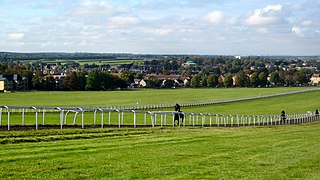
Newmarket is a market town and civil parish in the West Suffolk district of Suffolk, England. Located west of Bury St Edmunds and northeast of Cambridge. It is considered the birthplace and global centre of thoroughbred horse racing. It is a major local business cluster, with annual investment rivalling that of the Cambridge Science Park, the other major cluster in the region. It is the largest racehorse training centre in Britain, the largest racehorse breeding centre in the country, home to most major British horseracing institutions, and a key global centre for horse health. Two Classic races, and an additional three British Champions Series races are held at Newmarket every year. The town has had close royal connections since the time of James I, who built a palace there, and was also a base for Charles I, Charles II, and most monarchs since. Elizabeth II visited the town often to see her horses in training.

Thoroughbred horse racing is a spectator sport in Australia, and gambling on horse races is a very popular pastime with A$14.3 billion wagered in 2009/10 with bookmakers and the Totalisator Agency Board (TAB). The two forms of Thoroughbred horseracing in Australia are flat racing, and races over fences or hurdles in Victoria and South Australia. Thoroughbred racing is the third most attended spectator sport in Australia, behind Australian rules football and rugby league, with almost two million admissions to 360 registered racecourses throughout Australia in 2009/10. Horseracing commenced soon after European settlement, and is now well-appointed with automatic totalizators, starting gates and photo finish cameras on nearly all Australian racecourses.
The Weatherbys Group is a UK conglomerate involved in a wide range of activities largely within banking and horse racing. The original business was founded by James Weatherby in 1770.

The National Horseracing Authority of Southern Africa, known as the National Horseracing Authority for short, formerly the Jockey Club of Southern Africa is the Southern African equivalent of the American and British Jockey Clubs, whose main purposes are to prevent malpractice in horse racing and to regulate the thoroughbred horse racing industry in Southern Africa.

The National Horseracing Museum (NHRM) is a museum in Newmarket, Suffolk dedicated to the history of horseracing. It covers a 5-acre site on Palace Street in the centre of the town, having previously been housed in the Jockey Club Rooms on Newmarket High Street. Together with the British Sporting Art Trust and Retraining of Racehorses it is part of the National Heritage Centre for Horseracing & Sporting Art which was opened by Elizabeth II in 2016.
Gordon Elliott is a County Meath-based National Hunt racehorse trainer. After riding as an amateur jockey, he took out a trainer's licence in 2006. He was 29 when his first Grand National entry, the 33 to 1 outsider Silver Birch, won the 2007 race. In 2018 and 2019 he won the Grand National with Tiger Roll, ridden by Davy Russell and owned by Gigginstown House Stud, the first horse since Red Rum to win the race twice. In 2018 he also won the Irish Grand National, with General Principle. On two occasions, in 2017 and 2018, he was the top trainer at the Cheltenham Festival.
The North American Racing Academy (NARA) is an accredited college in Lexington, Kentucky. It offers the only college degree program in the United States focused on producing jockeys.
The March Stakes was a flat horse race in Great Britain open to horses aged three years. It was run at Goodwood over a distance of 1 mile and 6 furlongs (2,816 metres), and was scheduled to take place each year in late August.
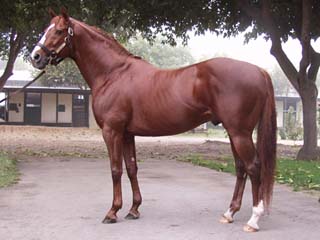
The Thoroughbred is a horse breed developed for horse racing. Although the word thoroughbred is sometimes used to refer to any breed of purebred horse, it technically refers only to the Thoroughbred breed. Thoroughbreds are considered "hot-blooded" horses that are known for their agility, speed, and spirit.
The Johnny Henderson Grand Annual Chase is a Premier Handicap National Hunt steeplechase in Great Britain which is open to horses aged five years or older. It is run on the Old Course at Cheltenham over a distance of about 2 miles, and during its running there are fourteen fences to be jumped. It is a handicap race, and it is scheduled to take place each year during the Cheltenham Festival in March.
Joseph William Saumarez Smith is a British businessman, journalist and gambling expert. He is Chair of the British Horseracing Authority, the chief executive of Sports Gaming Ltd, a gambling management consultancy, chairman of gambling platform developer Bede Gaming and an investor in numerous online businesses.

The Racehorse Owners Association (ROA) is a British horse racing organisation that promotes and protects the interests of racehorse owners in Great Britain. As one of the British Horseracing Authority's (BHA) shareholders, the ROA play a central role in British racing politics and finance.

Horseracing in the Philippines began as a recreational activity in 1867. Its history is divided into three major time periods based on the breed of horses raced, in conjunction with the three significant eras of Philippine history. According to the type of horses used, the periods are the Philippine-pony era (1867–1898), the Arabian-horse era (1898–1930), and the Thoroughbred era (1935–present).
The Scarbrough Stakes was a Listed flat horse race in Great Britain open to horses aged two years or older. It was run at Doncaster Racecourse over a distance of 5 furlongs and 3 yards, and was scheduled to take place each year in September. It was removed from the pattern race programme by the British Horseracing Authority in 2024.
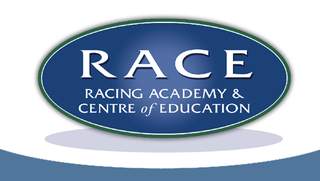
The Racing Academy and Centre of Education (RACE) is a jockey training school based in Kildare town near the Irish National Stud Kildare, Ireland. Its Trainee Jockey Course is a foundation course in race riding and stable work, taught in a 42-week residential program. Students typically go on to either jockey apprenticeships or stable work after completing the course. Johnny Murtagh, Cathy Gannon, Sean Flanagan and Shane Foley are among those who have gone on to success as racing jockeys after taking the Trainee Jockey Course. RACE also offers other training and certification in race riding, the care of horses and racehorse training, including riding courses for international students. The Irish School of Farriery run by the Irish Farriery Authority is located in a purpose-built building on the RACE campus, and several other organisations involved in the equine sector are also located here.
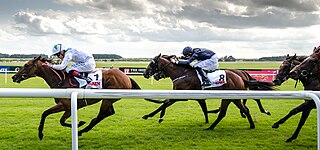
Horse racing in Ireland is intricately linked with Irish culture and society. The racing of horses has a long history on the island, being mentioned in some of the earliest texts. Domestically, racing is one of Ireland's most popular spectator sports, while on the international scene, Ireland is one of the strongest producers and trainers of Thoroughbred horses. The Irish horse racing industry is closely linked with that of Great Britain, with Irish horses regularly competing and winning on the British racing circuit.













